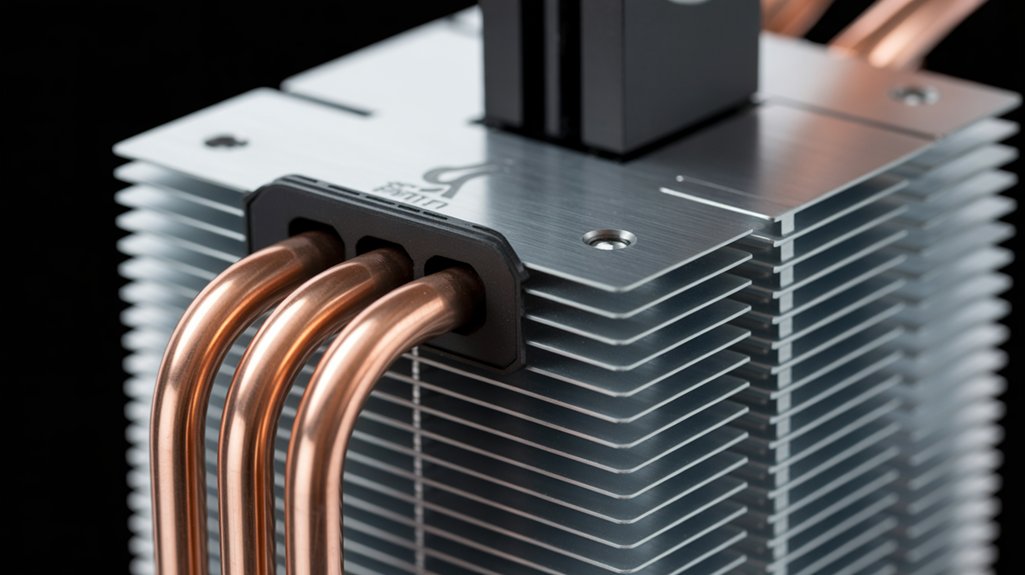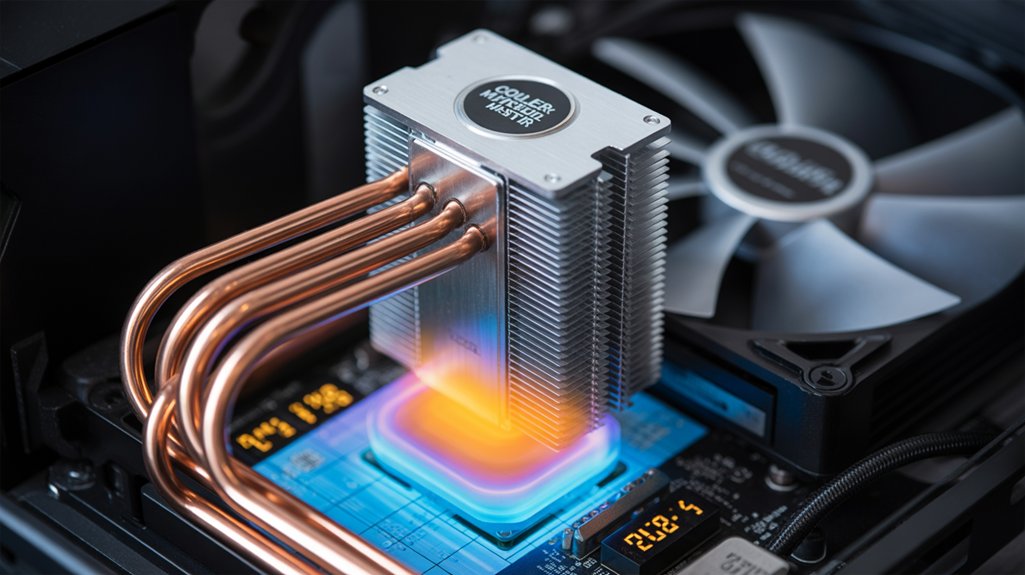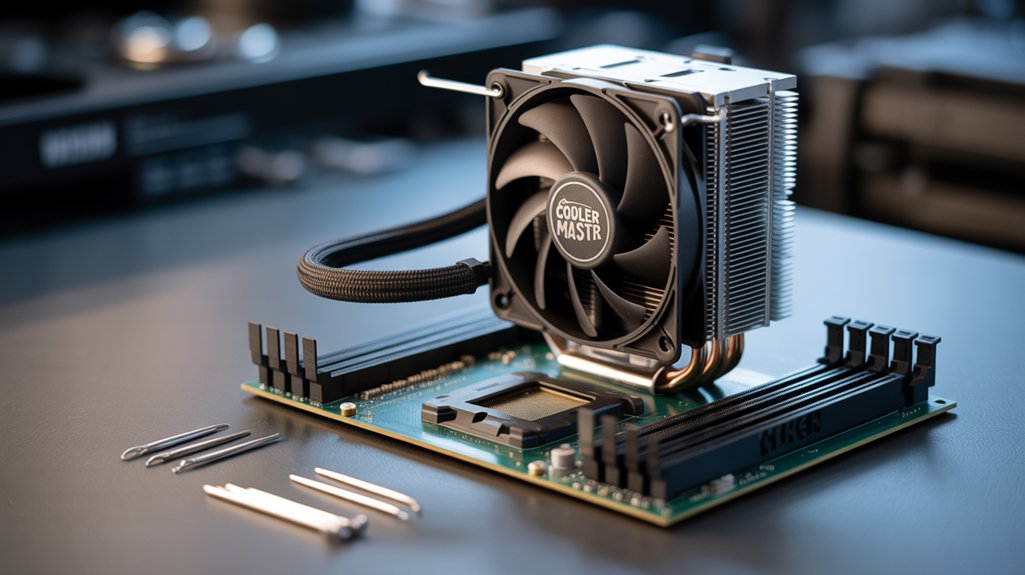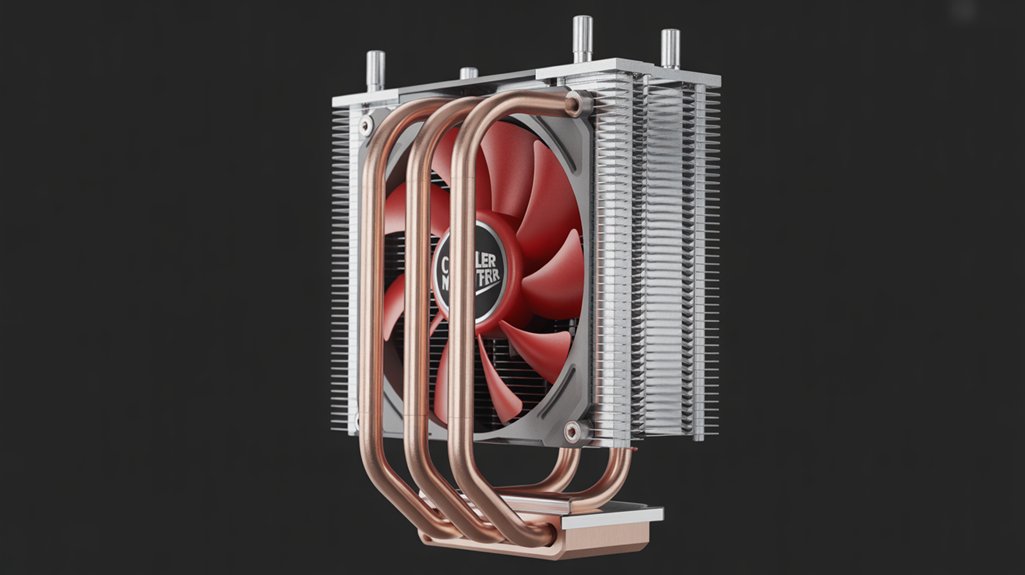The Cooler Master Hyper 212 Evo represents a significant benchmark in the aftermarket CPU cooling segment, combining four direct-contact copper heat pipes with a densely packed aluminum fin array. Its asymmetrical tower design addresses clearance concerns while maintaining thermal efficiency through optimized airflow channels. Initial temperature measurements reveal substantial improvements over stock cooling solutions across multiple processor generations. However, performance variations emerge when examining specific thermal loads, installation complexities, and compatibility limitations that warrant closer examination.
Design and Build Quality Analysis

The Hyper 212 Evo employs a tower-style heat sink architecture that integrates four 6mm copper heat pipes with direct contact technology, eliminating the traditional base plate to maximize thermal transfer efficiency from the CPU to the aluminum fin stack.
The construction exhibits solid component durability through robust mounting hardware and quality materials. The aluminum fins demonstrate precise manufacturing tolerances with consistent spacing for optimal airflow.
The 120mm PWM fan features wave-shaped blades engineered for performance rather than aesthetic appeal.
The overall build quality reflects reliable engineering with a practical design focused on thermal management rather than visual enhancement.
Thermal Performance Testing Results

Performance benchmarks reveal the Hyper 212 Evo’s thermal capabilities across multiple CPU configurations and workload scenarios.
Testing demonstrates consistent thermal efficiency with temperature reductions of 15-25°C compared to stock coolers during sustained loads. The four copper heat pipes deliver adequate cooling capacity for mid-range processors, maintaining temperatures below 75°C under typical gaming workloads.
Stress testing reveals the cooler’s limitations with high-TDP CPUs, where temperatures approach thermal throttling thresholds.
The PWM fan’s variable speed operation balances noise levels with cooling performance, operating between 600-2000 RPM based on thermal demands and maintaining sub-36dBA acoustics.
Installation Process and Socket Compatibility

Multiple socket compatibility options make the Hyper 212 Evo adaptable across diverse CPU platforms, supporting both Intel and AMD configurations spanning several generations.
The cooler accommodates Intel LGA sockets including 2066, 2011-v3, 2011, 1366, 1200, 1156, 1155, 1151, and 1150, alongside AMD AM4, AM3+, AM3, AM2+, AM2, FM2+, FM2, and FM1 sockets.
Installation tips include verifying motherboard clearance with the 159mm height specification and ensuring proper thermal paste application.
The socket guide provided details mounting hardware specific to each platform, with tool-free installation mechanisms simplifying the process across most supported configurations.
Conclusion
The Cooler Master Hyper 212 Evo demonstrates solid thermal management capabilities for mid-range processors, achieving temperature reductions of 15-25°C over stock cooling solutions. Its four-heatpipe tower design with aluminum fin assembly provides effective heat dissipation while maintaining reasonable acoustic levels. The universal mounting mechanism ensures broad socket compatibility across Intel and AMD platforms. While thermal headroom limitations exist for high-TDP processors, the unit represents a balanced solution for mainstream gaming applications requiring enhanced cooling performance.


